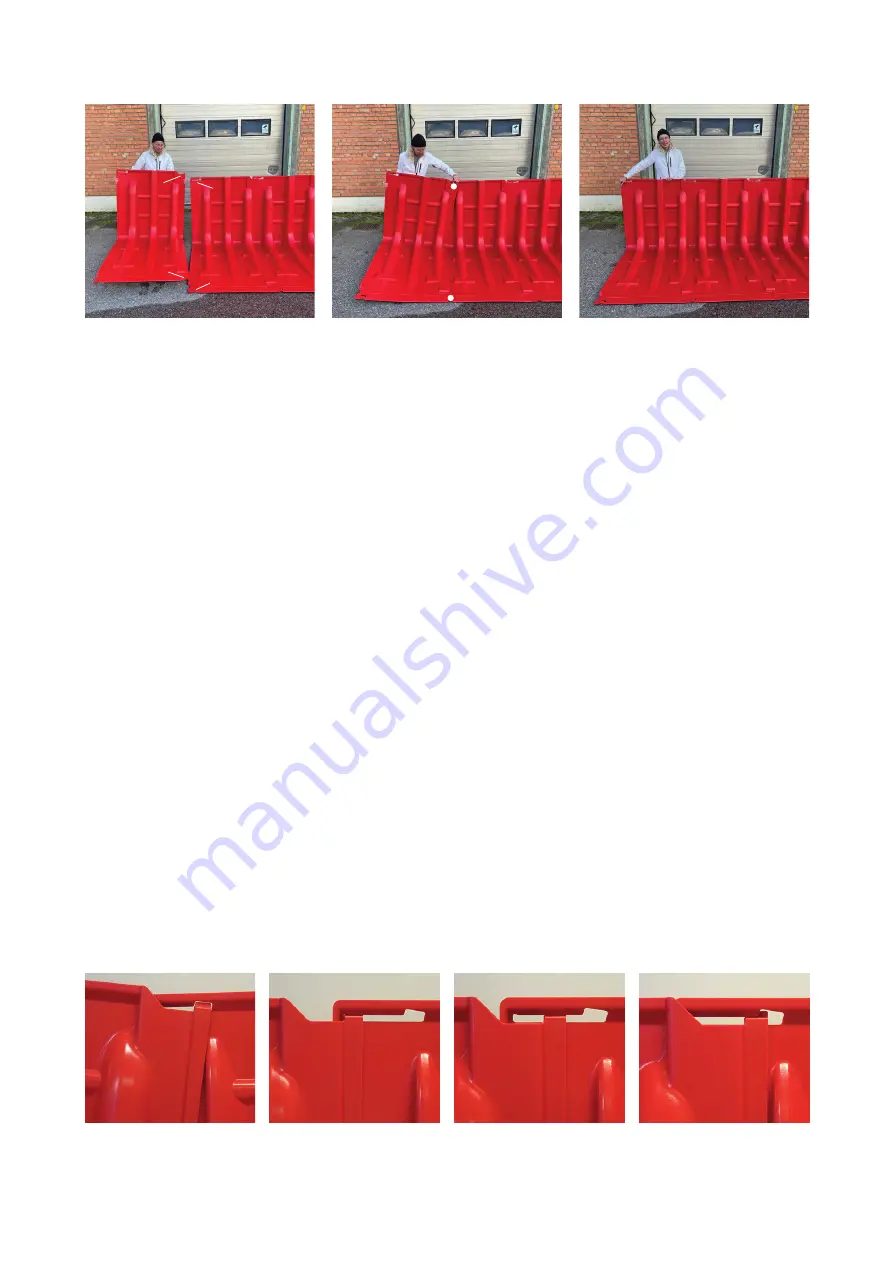
2. Lay out the boxes and connect them one by one
Start from the left (seen from the dry side) and connect the boxes one at a time to the previous
one.
The boxes have a
coupling mechanism
(at the front) and a
locking mechanism
(at the
top). Tip the box slightly forwards and connect it with the previous box by inserting the protruding
”tongue” (on the far left) beneath the ”bridge” (on the right-hand side of the previous box).
Now lean the box a little to the side, press down its rear edge and insert the pin of the locking
mechanism into the groove in the previous box. Use your foot to hold up the right side of the
box to be able to use both hands for the coupling maneuver. Turn the box so that the pin ends
up in the middle of the groove. This is the normal position. However, the locking mechanism
has a certain flexibility allowing the boxes to be /-2° against one another.
To help the sealing strip underneath create a tight seal against an uneven surface, you can
place a weight on the front edge of each box, for example a stone or a sandbag. It can also
be necessary to ballast the boxes in this way if there is a strong wind, before the water arrives.
The boxwall is not very susceptible to winds coming from the front, but winds from behind
will try to lift it.
Also when deploying a boxwall in deep water the boxes need to be ballasted from start to
prevent them from floating. A difference in levels between the water in front of the boxwall
and behind it is necessary to achieve the pressure difference that keeps the barrier in place.
If you want to improve the seal, you can cover the boxwall and its connections with a specific
thin plastic sheeting, a liner. The sheeting for BW102 is 3.0 meters wide and can be fixed with
clamps along the upper edge and with a line of gravel or sandbags on the ground in front of
the front edge. By covering the boxwall with a plastic liner it can also be used on a much more
uneven ground, as the liner is more flexible.
Assembly position
2° in one direction
Normal position
2° in the other direction
4 (8)
NOAQ BW102 1.0 201201
Locking mechanism
Coupling mechanism
Bridge
Tounge
Pin
Groove


























